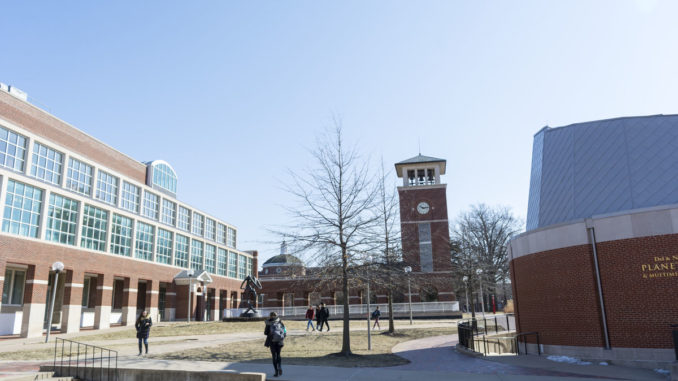
Based on new student application and admission numbers, Truman State University is projected to have another decrease in enrollment.
As of Tuesday, there were 3,627 applicants, 2,678 of which have been admitted. Dawn Howd, associate director of admissions, said the goal is to enroll a freshman class of 1,100 students.
The University is down about 200 applicants and about 150 admitted students from average numbers this time last year. While it is still early, Regina Morin, vice president for enrollment management, said the strongest indicator of enrollment is the number of students who RSVP for orientation sessions, which as of right now is similar to levels last year.
Morin said Truman typically has about a 39% yield, which is the amount of students who have been admitted and then go on to enroll at Truman. Last year, however, yield was at 36%, and student retention also fell 3%, meaning there was an unusual drop in enrollment. Now this smaller class will have an impact on overall enrollment for the next 3-4 years.
Morin said the behavior of the new student class is different from what she has previously seen because they are more indecisive — meaning they are committing to schools later than usual. She said there also seems to be an unusual number of students taking a gap year.
“We are in the grips of the demographic shift,” Morin said. “That’s really the biggest problem. There aren’t as many students. There are simply not as many students across the Midwest, and at Truman … that population is shrinking faster than the general numbers.”
Truman’s pool consists primarily of traditional students who are well prepared and looking for a residential experience, Morin said.
Morin said the University is looking at fewer applications, which means the number of accepted students is also down. Additionally, Morin said there is an inordinate number of students in an awaiting submission category, who haven’t finished their application, as well as a larger than normal pool of students who have finished an application but have not submitted all their application materials.
Howd said she doesn’t want to compromise the Truman experience by trying to get more students enrolled. Truman’s average ACT score is in the top 10%, so there is tougher competition to recruit those students, Howd said.
“It’s hard when there just aren’t as many students to find out there to come here,” Howd said. “We don’t want to change who we are — that’s not appropriate. What we really have to do is have a great product to go out there and talk about.”
Despite the current numbers, Morin said she is optimistic enrollment can remain at its current level if 150 more students apply before August, yield levels rise back to normal, and they try to get students who have already started applications to finish them. She said they are reaching out to students who have listed Truman on their FAFSA forms but haven’t submitted applications and targeting specific kinds of students who might have overlooked Truman.
With the help of SEM Works, the enrollment consulting firm, and SME, the marketing consulting firm, Morin said she thinks Truman will be able to compete with other colleges in Missouri and the Midwest more successfully. The companies are working to guide Truman in how to appeal to the new generation of students without compromising the University’s mission.
“As I shared when I announced we had retained the services of SEM Works (an enrollment management consultant) and SME (a marketing/branding/identity firm), that work is expected to impact Fall 2020 enrollment and not impact Fall 2019 enrollment in any significant way,” University President Sue Thomas wrote in an email statement to The Index. “That is why I emphasized in my All University Address the importance of every member of our community working to get one more student to come to Truman and/or one more student to stay at Truman.”
Morin said she thinks it’s a good time to get different perspectives by hiring a new admissions director and her replacement for when she retires at the end of the school year. She said while she and Melody Chambers, the former admissions director, had the historical knowledge from being part of the Truman community for a long time, new people won’t be burdened with doing things as they have always been done.
“What worked in the past is not going to work now,” Morin said.
Some of the steps Truman has taken to recruit more students include visiting about 150 more high schools throughout the region, more substantive training for admission counselors, a social media and electronic recruitment effort, and more.
Howd said the admissions office is trying a relationship-building approach because they are finding students looking at colleges are looking for a safe choice that they will stay at throughout their college career. The counselors have worked on a more consistent and conversational tone and have visited every county in Missouri. Other efforts have included adding a regional counselor in the northern Illinois area and more big events for opportunities for prospective students to visit campus.
Howd said she didn’t expect to have low admission numbers again because Truman has normally bounced back from bad years quickly. She said there might be some factors that make it more difficult to recruit that are out of her office’s control, including outside perspectives on liberal arts colleges and Truman’s rural location.
With a number of admission counselor positions still open, Howd said she doesn’t expect it to be a large problem this year.
